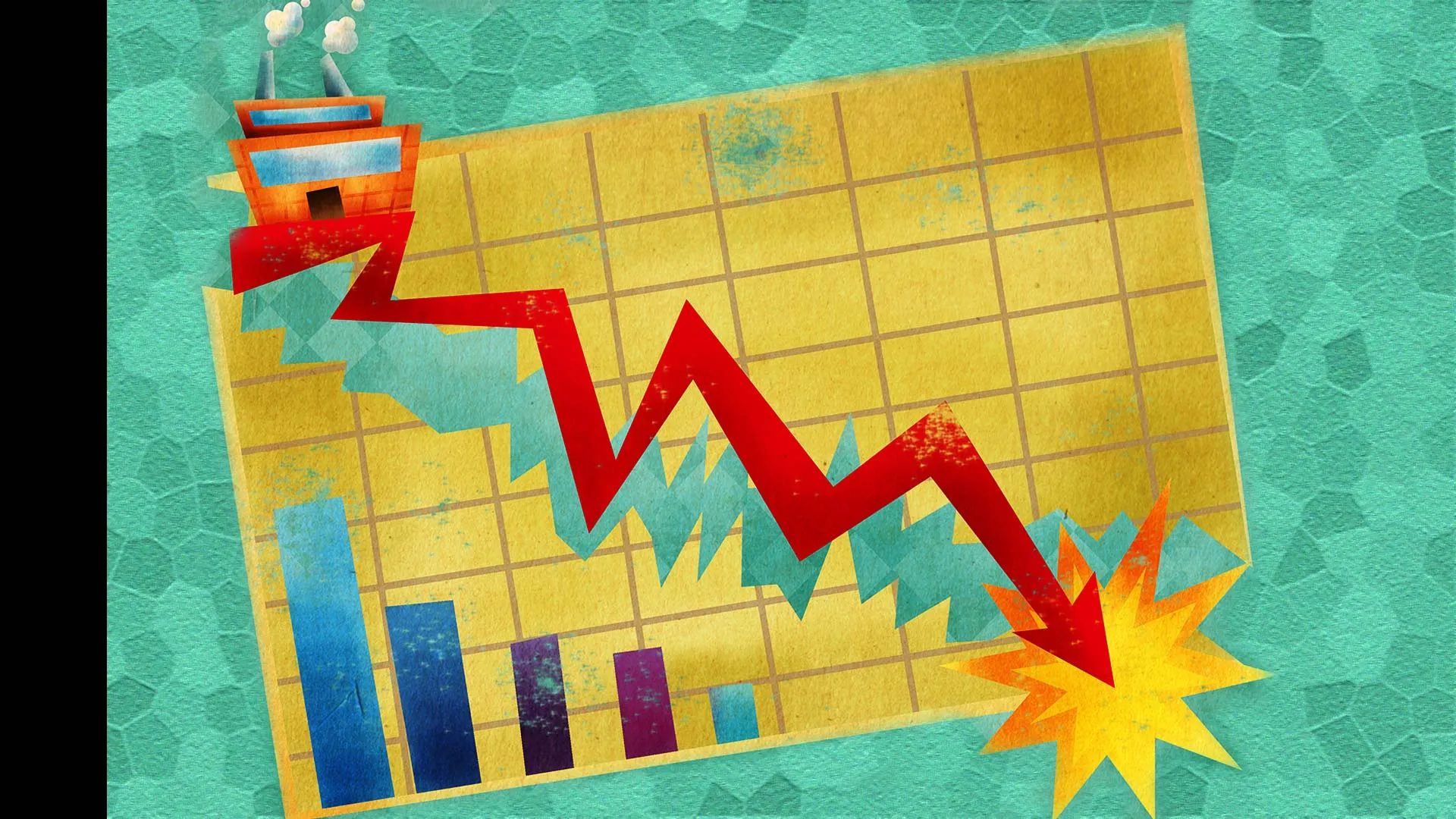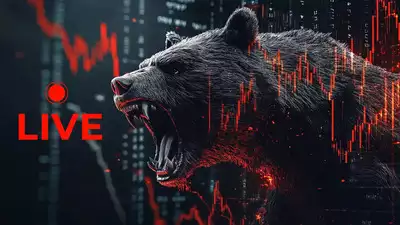Markets
Indian Stock Markets’ Downward Spiral Continues, Sensex Down 3,000 Points In Over A Week! The Big Guns Lose Rs 81,000 Crore—Will The Mayhem Stop?
Published
8 months agoon

Brace yourselves—it’s absolute mayhem in the Indian stock markets! The Sensex has nosedived 3,000 points over the past nine sessions, leaving investors clutching their portfolios in despair. And if you thought the pain was limited to the big guns, think again. The real carnage is unfolding in the smallcap and microcap segments, where retail investors are trapped in a bear market abyss with no exit in sight.
FIIs Are Pulling the Plug—And Taking Billions With Them
Foreign Institutional Investors (FIIs) have been on a selling spree, withdrawing a whopping Rs 1 lakh crore from Indian markets in 2025 alone. Their cautious approach isn’t surprising, given the stormy global investment climate. With valuations sky-high and emerging markets facing the heat, India is no longer the darling of global investors. The result? A relentless selloff that refuses to let up.
Nifty’s Worst Losing Streak Since 2019
Nifty is on a historic losing streak, its worst since 2019, when it tumbled 5% over nine sessions between April 30 and May 13. Back then, the market found its feet and staged a 6% relief rally within a week. But this time? Not so fast. With FIIs dumping stocks like there’s no tomorrow, any hopes of a bounce-back are dwindling fast. Panic is spreading like wildfire—with investors wondering how much more pain can they take?
Big names are crumbling under the pressure. Nifty stocks have tanked up to 42% from their peaks, and Tata Motors is leading the pack in losses. If you were banking on stability, you might want to reconsider. With no signs of a bottom in sight, fear and uncertainty are running high.
Earnings Didn’t Help—And the Global Scenario Isn’t Helping Either
Quarterly earnings failed to lift spirits, with Nifty’s Q3 growth at a modest 5% year-on-year. This tepid performance has done little to ease investor jitters. Add to that the risk of earnings downgrades, inflated valuations across sectors, and persistently high global interest rates, and you’ve got a recipe for continued turmoil.
Market stability remains elusive, and experts are warning that the downward trend may continue for a while. While corrections are a part of investing, this one feels different. The fear is palpable, and the market’s ability to bounce back is in question.

Big Guns and Mega Losses
The sharp selloff in Indian equities over the past five months hasn’t spared even the biggest names in the game. Some of the country’s most well-known investors have seen their portfolios take a beating, especially in smaller companies, with their holdings eroding by up to 25% since January 1 and nearly 30% since October 1.
The top 10 individual investors have collectively lost nearly ₹81,000 crore since October 1, though a few have managed to cushion the blow.
Massive Hits
DMart founder Radhakishan Damani has seen his wealth shrink by a staggering ₹64,000 crore, a 28% drop since October 1. His holdings fell from ₹2.31 lakh crore to ₹1.67 lakh crore, according to primeinfobase.com. His flagship Avenue Supermarts saw its stock tumble 27%, while his second-largest investment, Trent, took a 32% hit.
The late Rakesh Jhunjhunwala’s family portfolio has declined 19% since October 1, excluding their stake in the recently listed Inventurus Knowledge Solutions, which alone is valued at Rs 14,400 crore. With this holding included, their total portfolio value stands at around Rs 59,709 crore.
Akash Bhanshali’s portfolio has eroded by 16%, with Gujarat Fluorochemicals losing 13%. However, his second-largest investment, One 97 Communications (Paytm’s parent company), has managed a rare 5% gain in this turbulent period.
Former investment banker-turned-entrepreneur Hemendra Kothari has taken a 29% hit on his wealth from listed firms. His two top holdings—Alkyl Amines Chemicals and Sonata Software—have plummeted 28% and 33%, respectively, since October 1.
Some Investors Managed to Stay Afloat
Not everyone is drowning in the selloff. Some investors, like Mukul Agrawal, Ashish Kacholia, and Yusuffali Kader, have managed to keep their losses to single digits. Mukul Agrawal of Param Capital limited his decline to just 6%, thanks in part to a 40% surge in BSE shares since October 1. His other key holdings, Neuland Laboratories and Radico Khaitan, have remained stable.

Is the Market Correction Over?
Indian investors have been riding a rollercoaster over the past five months. From soaring heights of 26,300 levels in late September 2024, the Nifty 50 has nosedived, shedding over 13% of its value. Meanwhile, global indices like the Dow Jones and Nasdaq are setting new records. So, what’s happening? Has the correction run its course, or are we just catching our breath before the bears charge again?
The Sensex Split Personality
The contrast between the Indian market and its global peers raises some serious questions. Are domestic factors weighing it down, or is this just a delayed reaction to broader economic shifts? The uncertainty is nerve-wracking. Every investor is glued to their screens, trying to decipher the next move.
Global concerns—ranging from economic slowdowns to geopolitical tensions and trade wars—are casting long shadows. Closer to home, the RBI’s stance on interest rates, corporate earnings trends, and persistent foreign investor exits are all playing a crucial role in shaping market sentiment.
Reading the Technical Tea Leaves
So, where is the Nifty headed? Let’s break it down using technical indicators.
Since December 2022, the Nifty has been moving within a well-defined parallel channel, bouncing between support and resistance levels. But here’s the catch—Friday’s close at around 22,900 suggests a potential break from this trend, sparking concerns of further downside risk.
The crucial 200-day exponential moving average (DEMA) is now in focus. This indicator often acts as a trend guide—trading above it signals bullish momentum, while dipping below it suggests trouble. Right now, the Nifty’s struggle to stay above the 200-DEMA is making traders jittery.
Key Levels to Watch
22,500: A major support level. If Nifty holds here, we might see a temporary relief rally.
Below 22,500: Things could get messy. A decisive drop could accelerate selling pressure, dragging the index towards a gap in the 20,291-20,508 range from December 2023.
23,250 (50-week moving average): Staying below this level further strengthens the bearish narrative.
Broader Market Trends
The Nifty 50 has been struggling, but the real pain is in the broader markets. Small- and mid-cap stocks are getting hammered, with indices diving over 20%, officially putting them in bear market territory.
Take the Nifty Smallcap 250, for instance. It hit a high of 18,688 on September 24, 2024, but couldn’t keep the momentum going. Since then, it’s crashed to 14,602—down more than 21%! This brutal drop highlights just how vulnerable smaller stocks are in the current market climate.
Market experts have been sounding the alarm on the sky-high valuations of mid- and small-cap stocks. Sankaran Naren, CIO of ICICI Prudential Mutual Fund, recently warned investors about the “absurd” valuations in these segments. He pointed out that the median price-to-earnings (P/E) ratio for mid- and small-caps has hit a ridiculous 43x, making them highly risky for investors looking for sustainable returns. His warning suggests there might be more pain ahead for these segments.
The China Factor
Meanwhile, something interesting is happening on the global stage—investors seem to be shifting focus to China. For years, India has been a top choice for foreign investments, but the massive rally in the Chinese markets, particularly the Hang Seng index, suggests that priorities might be changing.
Over the last five months, the Hang Seng has skyrocketed more than 35%, making it an attractive bet for global investors looking for better returns. After years of stagnation, China’s markets are bouncing back, leading to speculation that international funds could be reallocating capital from India to China.
There are a few reasons why this shift might be happening. China has been making efforts to boost its economy, loosening regulatory restrictions on tech companies, and generally creating a more favorable investment environment. On the flip side, India’s stock market hasn’t been performing as well compared to other global indices. This underperformance could be prompting some investors to look elsewhere for better opportunities.
The Last Bit
With multiple bearish signals in play, the market is on shaky ground. The broken channel, breach of key moving averages, and persistent selling pressure suggest the bears still have the upper hand. That said, markets are unpredictable, and any positive trigger—be it policy changes, earnings surprises, or fresh foreign inflows—could turn things around.
You may like
-


Indian Stock Market In Turmoil. Investors In Panic Mode, Is This A Temporary Correction Or The Start Of A Bear Market?
-


Indian Stock Markets In Meltdown Mode—Is It Time To Buy The Dip? Gold Is On Fire, And There’s No Stopping It!
-


With The Markets Cracking, Should The Incoming Batch Of IPOs Worry?
-


The Slippery Slope Of One More Drop. Nifty Nearing Its 28-Year Record-Breaking Crash. Is Zomato And Jio Fin To Be Blamed?
-


Are Indian Startups Foundations Cracking As Funds Start Moving Out And Away? The Road Ahead, Dance Without Music?
-


The Stock Market’s Cracking—And It’s Not Pretty. FIIs Exodus But Analysts Sight Long Term Potential Despite Rs 32,00,000 Core Investor Wealth Gone In 2025. What Is The Bear-ish Deal Here?
